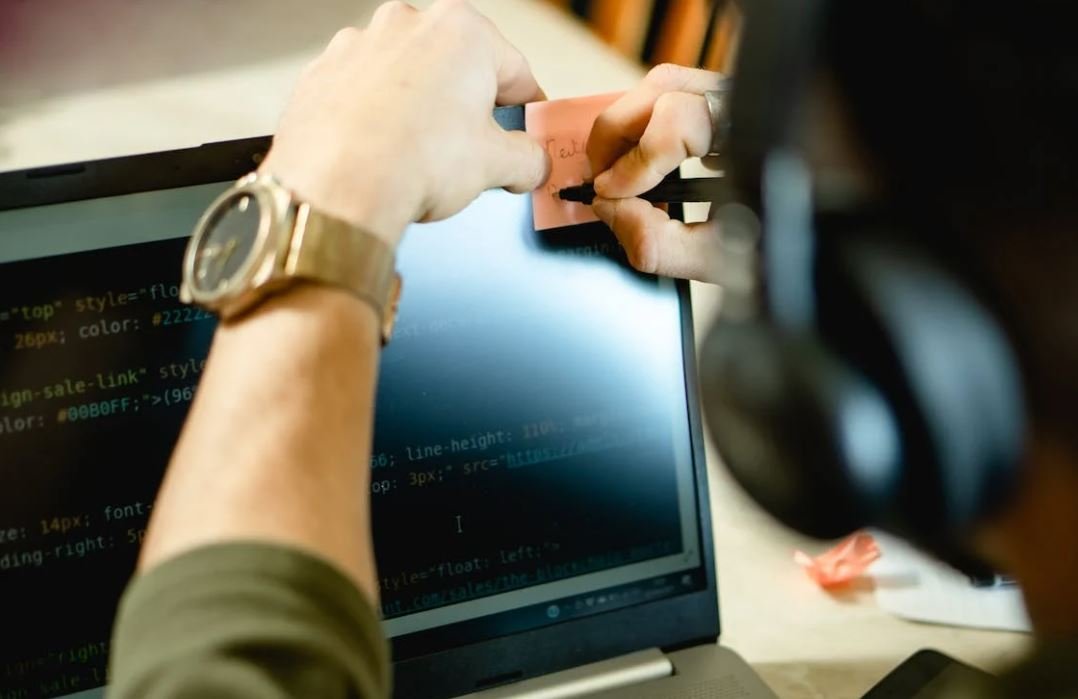Deepfake Kya Hai?
Kya aapne kabhi suna hai “Deepfake” ke baare mein? Yeh ek technology hai jo tasveeron, videos, ya awazon ko manipulate karke asli tareeke se dikhaye ja rahe content ko tayyar Karta Hai.
Key Takeaways:
- Deepfake ek technology hai jo audio, video, aur tasveeron ko manipulate karne mein use hoti hai.
- Yeh technology musalsal taraki kar rahi hai aur surya se faux content banane ki sambhavna dayati hai.
- Deepfake se judi samasyaon mein privasi sambandhit chintayein, cyber crime, aur vyakti ke chehre ki kalpana ko istemal karna shaamil hai.
Deepfake ka shabdik arth hai: “Deep” se joda jaa sakta hai, jo ek machine learning technique hai aur “fake” ke saath joda ja sakta hai, jo man-made/naqli cheezen hai. Yeh technology GANs (Generative Adversarial Networks) dwara sambhavit hoti hai, jo do algorithms se kaam karti hai – ek jo asli cheezein banata hai aur dusri, in cheezon ko pehchanne mein madad karti hai.
Deepfake aaj kal cyber duniya mein bahut prasiddh ho rahi hai.
Deepfake technology ke bade fayde hain, jaise ki film industry mein special effects ko aur advanced banane ka mauka, par iske saath-saath major samasyayen bhi hai. Yeh technology privacy sambandhi concerns, cyber crimes aur identity theft ki sambhavna ko bhi badha sakti hai. Iski sabse badi samasya hai chehre ki kalpana ka galat istemal karke logon ko lootna, dhokha dena, ya badnaam karna.
Deepfake ka istemal politics, entertainment aur social media mein ho raha hai. Kuch log deepfake videos banakar apne celebrities ki tarah dikhna chahte hain, jabki kuch log politicians ya celebrities ko target banate hain. Yeh technology bhi ghatnaon ya purane videos mein apni alag kimat de sakti hai.
Deepfake aur Cyber Crime
- Deepfake cyber bullying aur online harassment ki sambhavna ko badha sakti hai.
- Yeh technology identity theft aur financial scams ke liye bahut upyogi ho sakti hai.
Deepfake cyber crime ke liye bhi ek badi samasya ho sakti hai. Iske dwara kisi ke chehre aur awaz ko nakli bana kar, cyber criminals logon ko dhoka de sakte hain. Isse identity theft aur financial scams ka khatra badh jata hai. Isliye, deepfake se bachne ke liye logon ko apni online security par dhyan dena chahiye aur awazatmak rahein.
Tables
| Deepfake Content | Authentic Content | |
|---|---|---|
| Creation | Manipulated using AI algorithms | Original and unaltered |
| Intention | To deceive or mislead | To provide genuine information |
| Trust | Eroded due to potential misuse | Usually high due to credibility |
| Areas | Impacts |
|---|---|
| Politics | Manipulation of public opinion |
| Entertainment | Misrepresentation of celebrities |
| Journalism | Erosion of trust in media |
| Measures | Benefits |
|---|---|
| Technological advancements | Better detection and prevention |
| Legal regulations | Deterrence and punishment for misuse |
| Media literacy | Increased awareness and critical thinking |
Deepfake ek sambhavna dene wala aur samasya pradan karne wala technology hai. Aage chalkar, iski samasyaon ko solve karne ke liye technological advancements aur legal regulations jaruri hai, jisse deepfake ke misuse ko roka ja sake. Media literacy aur awarness badhana bhi mahatvapurna hai, taaki log deepfake ki pehchan kar sakein aur sahi faisla kar sakein.

Common Misconceptions
Deepfake Kya Hai?
Deepfake is a term that refers to the use of artificial intelligence and machine learning technologies to create manipulated media that appears real. However, there are several misconceptions surrounding this topic that need to be addressed:
Misconception 1: Deepfakes are easily detectable
- Deepfakes are becoming increasingly sophisticated and difficult to detect.
- Advanced algorithms are being developed to make deepfakes more realistic and indistinguishable from real footage.
- Without specialized tools, it can be challenging to identify deepfakes accurately.
Misconception 2: Deepfakes are only used for malicious purposes
- While deepfakes have gained attention due to their potential misuse in spreading misinformation and fake news, they also have positive applications.
- Deepfakes can be used in the entertainment industry to create digital doubles of actors for movies or to bring deceased actors back to the screen.
- They can also be used in research and development for various purposes, such as improving human-computer interactions.
Misconception 3: Deepfakes are limited to video manipulation
- Deepfakes can also manipulate audio to create fake voices or alter existing ones.
- They can be used to create fake images, such as forged photographs or realistic-looking composite images.
- Deepfakes are not limited to altering video footage; they can be applied to multiple media types.
Misconception 4: Deepfakes are illegal everywhere
- While deepfakes can pose ethical concerns, the legality of their creation and usage varies across jurisdictions.
- Some countries have specific laws in place that regulate or prohibit the creation and distribution of deepfakes, especially for non-consensual pornography or defamation purposes.
- However, the legal landscape around deepfakes is still evolving, and there may be gaps in legislation or inconsistent enforcement in certain regions.
Misconception 5: Deepfake technology is only accessible to experts
- While advanced deepfake creation may require technical expertise, there are also user-friendly applications and tools available to create basic deepfakes.
- The accessibility of deepfake technology has raised concerns about its potential for misuse by non-experts or those with malicious intent.
- As deepfake technology advances and becomes more accessible, it is crucial for individuals to be aware of its risks and take necessary precautions.

Risks of Deepfake Technology
Deepfake technology poses significant risks to society. The following table highlights some of the dangerous consequences associated with its misuse.
| Consequences | Impact |
|---|---|
| Political Manipulation | False information can be used to influence elections and deceive voters. |
| Identity Theft | Deepfakes can be used to impersonate individuals for fraud or illegal activities. |
| Fake News Amplification | Deepfakes can further exacerbate the problem of spreading disinformation. |
| Cyberbullying | False videos can be created to harass individuals or damage their reputation. |
Applications of Deepfake Technology
Although often associated with negative implications, deepfake technology also has various positive applications. The table below showcases some of its potential uses.
| Applications | Benefits |
|---|---|
| Entertainment | Enhancing visual effects in movies and creating realistic digital characters. |
| Historical Reconstruction | Reviving historical figures through realistic digital recreations. |
| Artistic Expression | Allowing artists to explore new creative possibilities in multimedia creations. |
| Language Accessibility | Facilitating better language translations and accessibility for those with speech impairments. |
Deepfake Detection Techniques
Researchers have developed several methods to detect deepfakes and mitigate their potential harm. The following table outlines some commonly used techniques.
| Detection Methods | Advantages |
|---|---|
| Facial Analysis | Examines facial inconsistencies and artifacts to identify potential deepfakes. |
| Reverse Engineering | Attempts to uncover the techniques used to generate the deepfake for identification. |
| Audio Analysis | Evaluates audio cues to determine if a video has been manipulated or synthesized. |
| Temporal Inconsistencies | Looks for unnatural movements or discrepancies in the video timeline. |
Deepfake Regulations Worldwide
Global efforts to regulate deepfake technology vary significantly. The table below provides an overview of some countries’ approaches.
| Country | Regulation Approach |
|---|---|
| United States | Legislations primarily focus on deepfake usage in politics and revenge pornography. |
| China | Strict regulations are imposed to control the creation and dissemination of deepfakes. |
| European Union | Proposes regulations to protect individuals’ privacy and prevent malicious uses of deepfake technology. |
| Australia | Considering the establishment of a certification system for authentic digital content. |
Deepfake vs. Real Video Examples
Seeing deepfake videos side-by-side with their genuine counterparts can help better understand the extent of the technology’s authenticity. The table compares a few instances.
| Videos | Deepfake | Genuine |
|---|---|---|
| News Anchor | A video where a news anchor appears to say fabricated statements. | The actual news anchor delivering accurate information. |
| Celebrity Interview | An interview in which a celebrity appears to provide misleading answers. | An authentic interview with the celebrity’s original responses. |
Future Implications of Deepfake Technology
The future impact of deepfake technology is both exciting and concerning. The following table explores potential implications.
| Implications | Scenario |
|---|---|
| Misinformation Overload | Deepfakes could lead to a saturation of manipulated content, making it harder to distinguish truth from fiction. |
| Trust Erosion | Widespread use of deepfakes can erode trust in media, institutions, and even personal relationships. |
| Novel Cybersecurity Threats | Deepfake technology may offer new avenues for hackers to exploit and deceive individuals. |
| Advancements in Authenticity | The sophistication of deepfakes could make it increasingly challenging to identify fakes, leading to an arms race between creators and detectors. |
Ethical Considerations of Deepfake Technology
Deepfake technology raises complex ethical considerations that warrant careful examination. The table below highlights some key aspects.
| Ethical Considerations | Implications |
|---|---|
| Consent and Privacy | Using someone’s likeness without their consent raises privacy concerns and potential harm. |
| Authenticity in Media | The line between real and fake becomes increasingly blurred, undermining the credibility of information sources. |
| Impacts on Society | Deepfakes can exacerbate societal divisions, trust issues, and exacerbate the spread of misinformation. |
| Legal and Criminal Use | Deepfake technology can be exploited for illegal activities such as defamation, fraud, or harassment. |
Concluding Remarks: The Deepfake Dilemma
The rise of deepfake technology presents a double-edged sword, providing both promising opportunities and alarming risks. While its positive potential spans entertainment, historical recreation, and accessibility, concerns over political manipulation, identity theft, and erosion of trust loom large. Detecting and regulating deepfakes remains an ongoing challenge, necessitating continued research and the development of countermeasures. As this technology advances, society must grapple with the ethical implications and collectively strive to strike a balance between innovation and security.
Frequently Asked Questions
What is deepfake?
Deepfake refers to the synthesized media generated using deep learning techniques, such as artificial intelligence (AI) and machine learning (ML). It involves manipulating or replacing existing content, typically faces, in audio, video, or images to create realistic but fictional results.
How does deepfake technology work?
Deepfake technology leverages deep learning algorithms and neural networks to analyze and understand patterns in existing data. These algorithms are then trained to generate synthetic content, which can be as complex as swapping faces in a video or mimicking someone’s voice.
What are the implications of deepfakes?
Deepfakes can have both positive and negative implications. On the positive side, they can be used in entertainment, art, and creative industries. On the negative side, deepfakes can be exploited for misinformation, fake news, defamation, and potential threats to privacy and security.
Are there any legal implications of creating or sharing deepfakes?
Yes, creating or sharing deepfakes without proper consent or for malicious purposes can have legal consequences. Laws surrounding deepfakes vary by jurisdiction, but in many places, they can be considered defamation, fraud, or invasion of privacy.
How can deepfake videos be detected?
There are various techniques that can be used to detect deepfake videos. These include analyzing facial inconsistencies, examining abnormal blinking patterns, assessing audio-video synchronization, and utilizing advanced AI-driven algorithms specifically designed for deepfake detection.
What are some methods to combat the spread of deepfakes?
Combating the spread of deepfakes requires a multi-pronged approach involving technological advancements, policies, and public education. Some methods include developing robust deepfake detection tools, promoting media literacy and critical thinking, and implementing legal frameworks to hold malicious actors accountable.
Is there a way to protect myself from being a victim of deepfakes?
While it’s challenging to entirely protect oneself from deepfakes, there are certain precautions that can be taken. These include safeguarding personal information online, being cautious with sharing sensitive media, staying well-informed about deepfake technology, and using reliable sources to verify the authenticity of media content.
Can deepfake technology be used for positive purposes?
Yes, deepfake technology has positive applications too. It can be used in entertainment and filmmaking industries for special effects and digital character creation. Additionally, it can help in historical preservation by bringing old photographs or recordings to life and enhancing visual storytelling.
What is the future of deepfake technology?
The future of deepfake technology is uncertain, but it is expected to continue advancing. As AI and ML technologies progress, so will the capabilities and sophistication of deepfakes. This calls for continual developments in deepfake detection and regulation to mitigate potential harm associated with their misuse.
Where can I report or seek help regarding deepfakes?
If you come across a deepfake that you believe is harmful or malicious, it is recommended to report it to the respective platform or social media site. Additionally, law enforcement agencies can be contacted for guidance on legal proceedings or seeking assistance in addressing deepfake-related issues.




